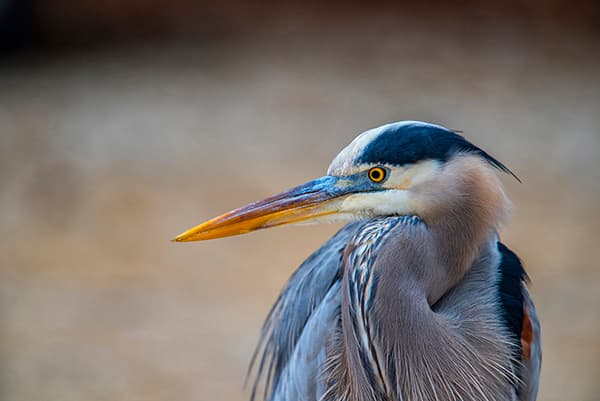Rogers
Wildlife
Rehabilitation Center
Our Story
Rogers Wildlife Rehabilitation Center (RWRC) is a 501c3 non-profit wildlife organization whose purpose is to provide care and rehabilitation to injured, sick and orphaned birds with the goal of returning them to their natural environment. The objective of RWRC's Outdoor Learning Center is to inspire all visitors to conserve and protect our native Texas wildlife.

Prior to obtaining 501(c)(3) status, Kathy Rogers spent eight years rehabilitating injured and orphaned birds out of her home. Once the non-profit status was granted, the Rogers Wildlife Rehabilitation Center moved its operation to Samuel Farm in 1989. During the following ten years, Kathy Rogers and her team of volunteers provided medical treatment and care for more than twenty thousand birds.
In 1999, Browning-Ferris Industries dedicated 20 acres of restored wetland habitat to serve as the permanent home of Rogers Wildlife Rehabilitation Center. Located in Hutchins, Texas, RWRC has grown to be the largest all-species avian rehabilitation and education center of its kind in North Texas. Rogers Wildlife holds Federal and State Rehabilitation and Educational Display permits.
The Wildlife Center consists of a critical care clinic, The George and Fay Young Clinic Annex, and the Outdoor Learning Center. The Outdoor Learning Center facilities include native Texas avian exhibits and over twenty-five rehabilitation flight cages. At any given time you will find more than 1000 protected birds of various species residing at the Wildlife Center.
Over the last 25 years, RWRC has provided medical treatment and care for more than 120,000 birds.
Over the last 25 years, RWRC has provided medical treatment and care for more than 120,000 birds. The majority of birds that we receive come to us with life-threatening injuries as a result of animal attacks, nest displacement (orphaned), automobile strikes, natural/man-made disasters, or abuse. Our Center receives rescued birds from individuals, the SPCA, various city animal control departments, and Texas game wardens from the North Texas area. We provide all medical treatment at the Wildlife Center, with the exception of surgeries that require anesthesia. We routinely treat infections, wounds, broken legs, broken wings, head injuries, and back injuries. Recovery time, depending on the injury, ranges from three days to nine months.
In 2015 alone, RWRC received 3,283 birds, of which 79% are protected by federal and state law. After months of medical treatment, care, and rehabilitation, we successfully returned 76% of the various hawks, owls, and other protected species back to their native habitat. Rogers Wildlife serves as a sanctuary for the remaining birds, as they are deemed non-releasable due to the extent of their injuries. All of our permanent residents live in habitat-specific settings and are cared for seven days a week, year-round, by our dedicated staff and volunteers.
In addition to our wildlife rehabilitation efforts, RWRC also serves as an environmental educational facility. Each year, hundreds of students and their families visit our Outdoor Learning Center to observe Texas wildlife and learn about the importance of conservation and protection of our Texas environment. Rogers Wildlife offers a variety of educational opportunities from Pre-K through 12th grade. Our primary objective is to inspire everyone that visits the Outdoor Learning Center to be a champion of wildlife conservation in their own respective communities and schools.
Various scouting organizations visit us throughout the year to fulfill badge and Eagle Scout requirements. Their most recent contributions include the construction of twelve large flight cages.
In August 2006, Texas Parks and Wildlife added RWRC to its Prairies & Pineywoods Wildlife Trail. Located at the edge of the Trinity River, bordering the Great Trinity Forest, the Center provides wonderful opportunities for birders to view migratory birds throughout the year. RWRC is listed in the Texas Discovery Loop alongside such other Texas attractions as the Texas Discovery Gardens and the Leonhardt Lagoon at the Dallas Museum of Natural History.
RWRC is entirely dependent on private donations, as it does not receive any federal, state, or local government funding for its rehabilitation and conservation efforts.